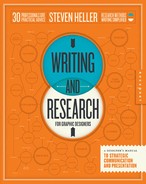Book Description
For designers, writing and research skills are more necessary than ever before, from the basic business compositions to critical writing. In this competitive climate, designers are routinely called upon to make words about the images and designs they create for clients. Writing about design is not just “trade” writing, but should be accessible to everyone with an interest in design. This book is a complete, introductory guide to various forms of research and writing in design and how they explain visuals and can be visualized. These pages address communication on various levels and to all audiences:- Designers to Designers - Designers to Clients - Designers to the Design-literate- Designers to the Design-agnosticBeing able to express the issues and concerns of the design practice demands facts, data, and research. With Writing and Research for Graphic Designers, you’ll learn how to turn information into a valuable asset one of the key talents of the design researcher.
Table of Contents
- Cover
- Title
- CONTENTS
- PREFACE: Designers, Meet the Word
- FOREWORD: Designers, Make Your Mark
- INTRODUCTION: Why I Write (1/2)
- INTRODUCTION: Why I Write (2/2)
- 1 READING, WRITING & RESEARCH
- 2 SURVEYING THE DISCIPLINES
- 3 THE EDITORIAL ROLE
- HOW TO EDIT AND BE EDITED: The Editor Is a Writer’s Best Friend
- Sue Apfelbaum Talks about What an Editor Does
- Aaron Kenedi Talks about Editing a Design Magazine
- Aaron Kenedi’s Favorite Print Spreads
- Excerpts from Monumental: The Reimagined World of Kevin O’Callaghan
- Deborah Hussey Talks about Writing for Books
- End of the Glue-Pot Era: An Editing Process in Three Versions (1/2)
- End of the Glue-Pot Era: An Editing Process in Three Versions (2/2)
- HOW TO EDIT AND BE EDITED: The Editor Is a Writer’s Best Friend
- 4 LEARNING FROM EXPERIENCES
- WRITERS DISCUSS THEIR WRITING: Designers as Authors / Authors on Design
- On Failure
- Allan Chochinov Talks about the Writer’s Attitude
- To Write about Design Is to Care about Other People
- David Barringer Talks about Respect for the Reader
- The Language of Design Imperialism
- Maria Popova Talks about Buzzword-Encrusted Language
- Fanzines by Teal Triggs
- Adrian Shaughnessy Talks about Being Personal
- Thomas Lenthal: The Deejay of Visual References
- Veronique Vienne Talks about Her Handicaps
- My Annotated Interview with Mike Salisbury
- Michael Dooley on Discovery and Skepticism
- WRITERS DISCUSS THEIR WRITING: Designers as Authors / Authors on Design
- 5 WRITING WITH IMAGES
- EPILOGUE: Is Anybody Reading?
- SELECTED BIBLIOGRAPHY
- CONTRIBUTOR BIOGRAPHIES
- INDEX
